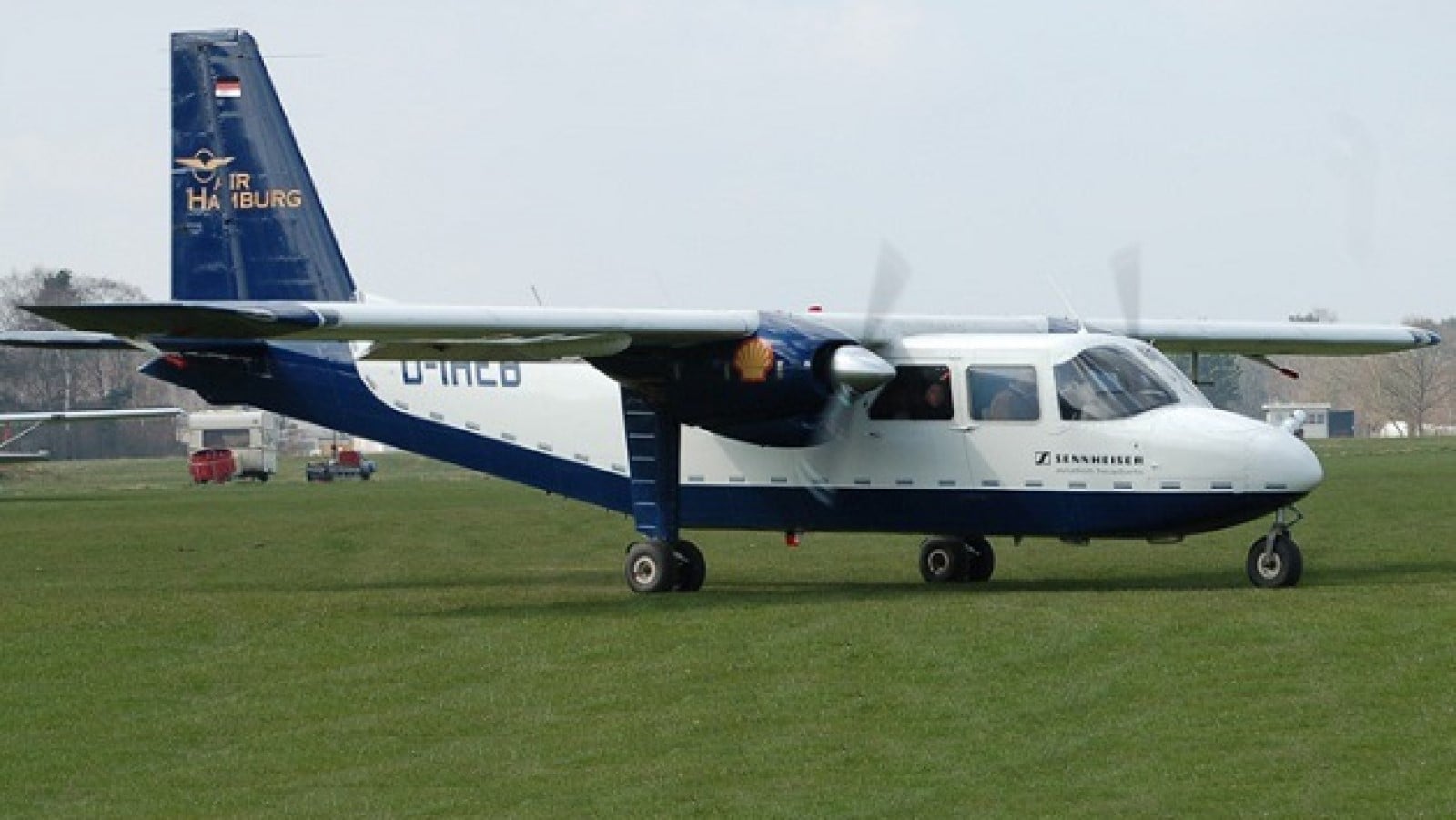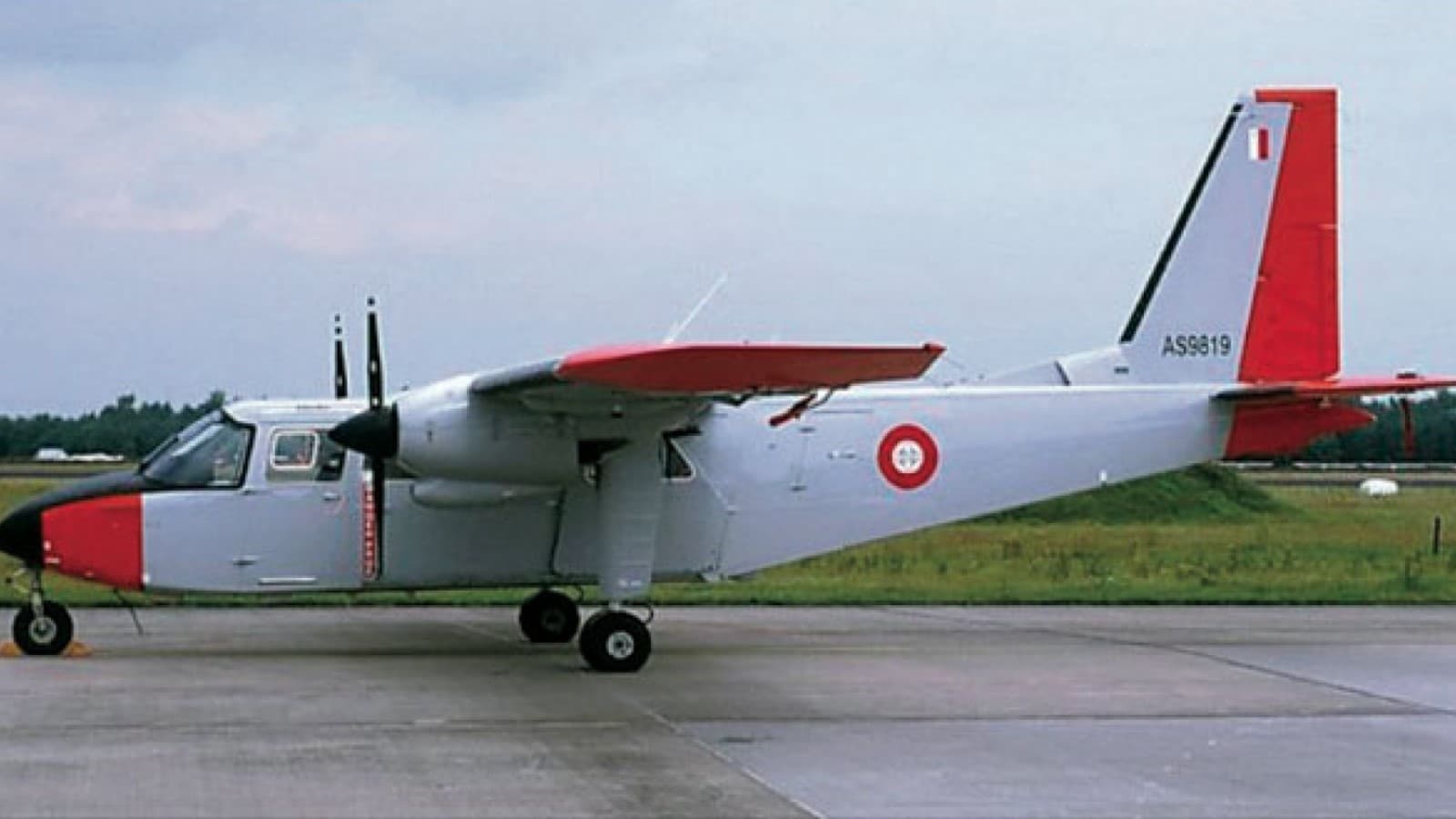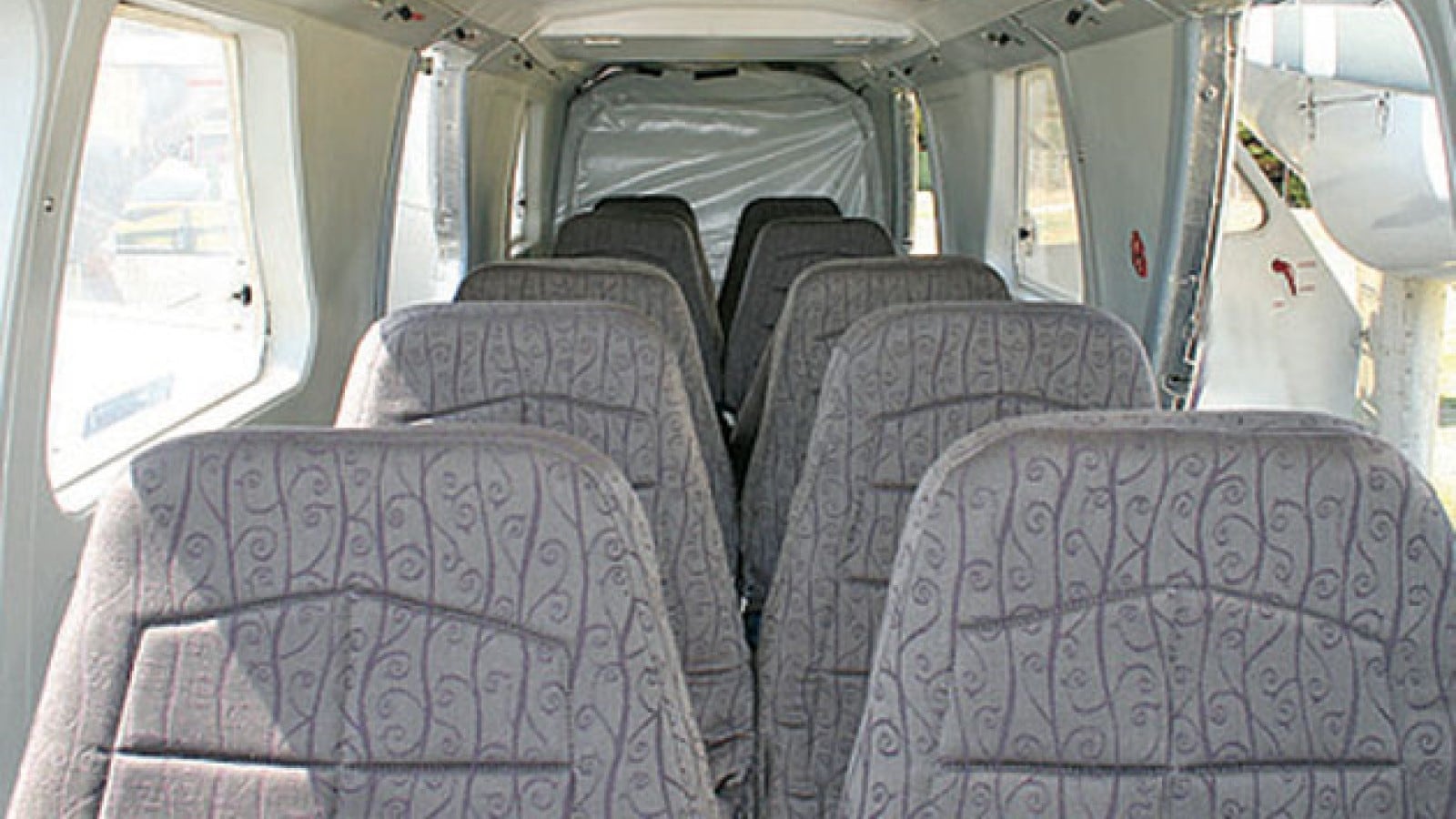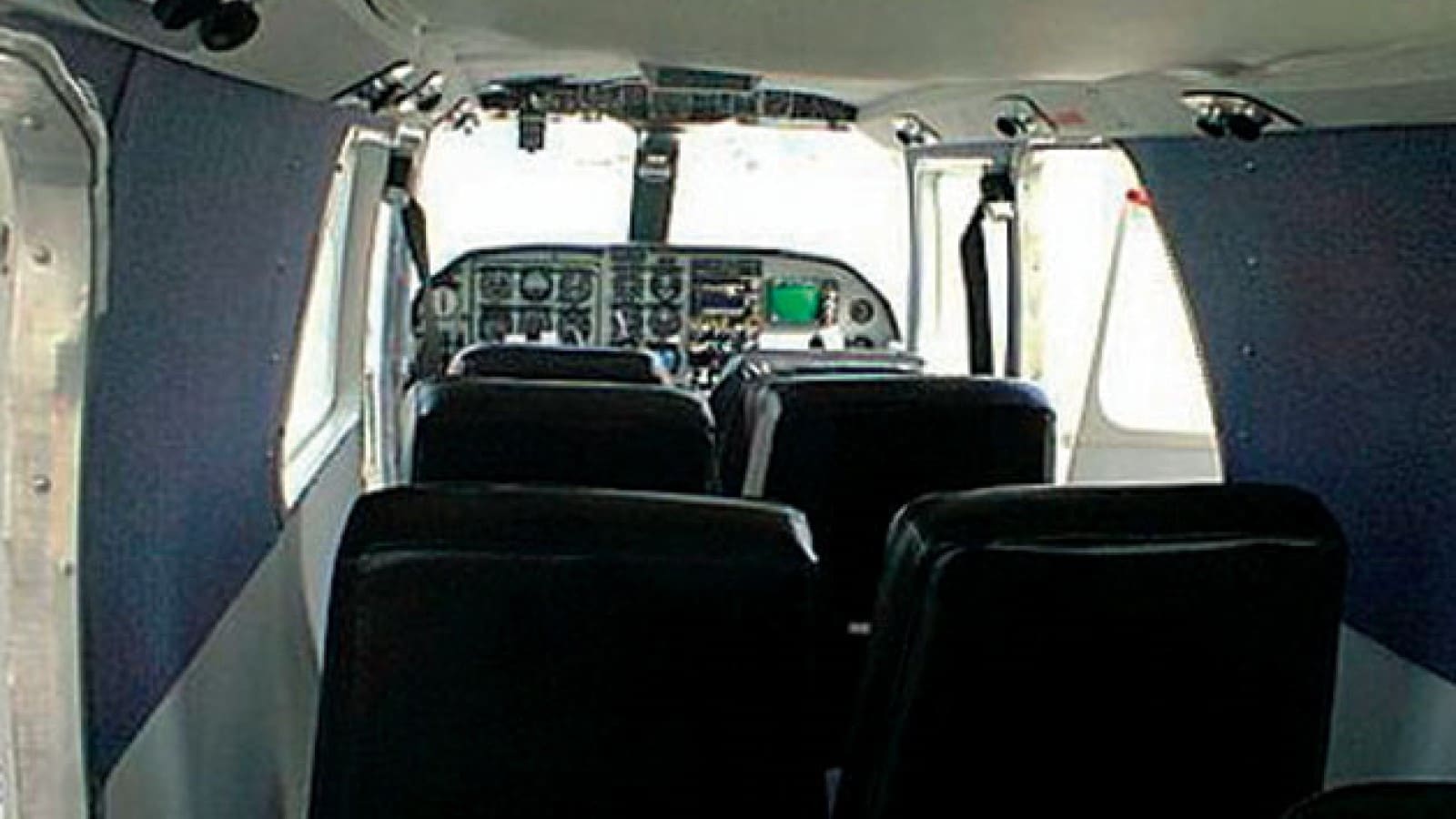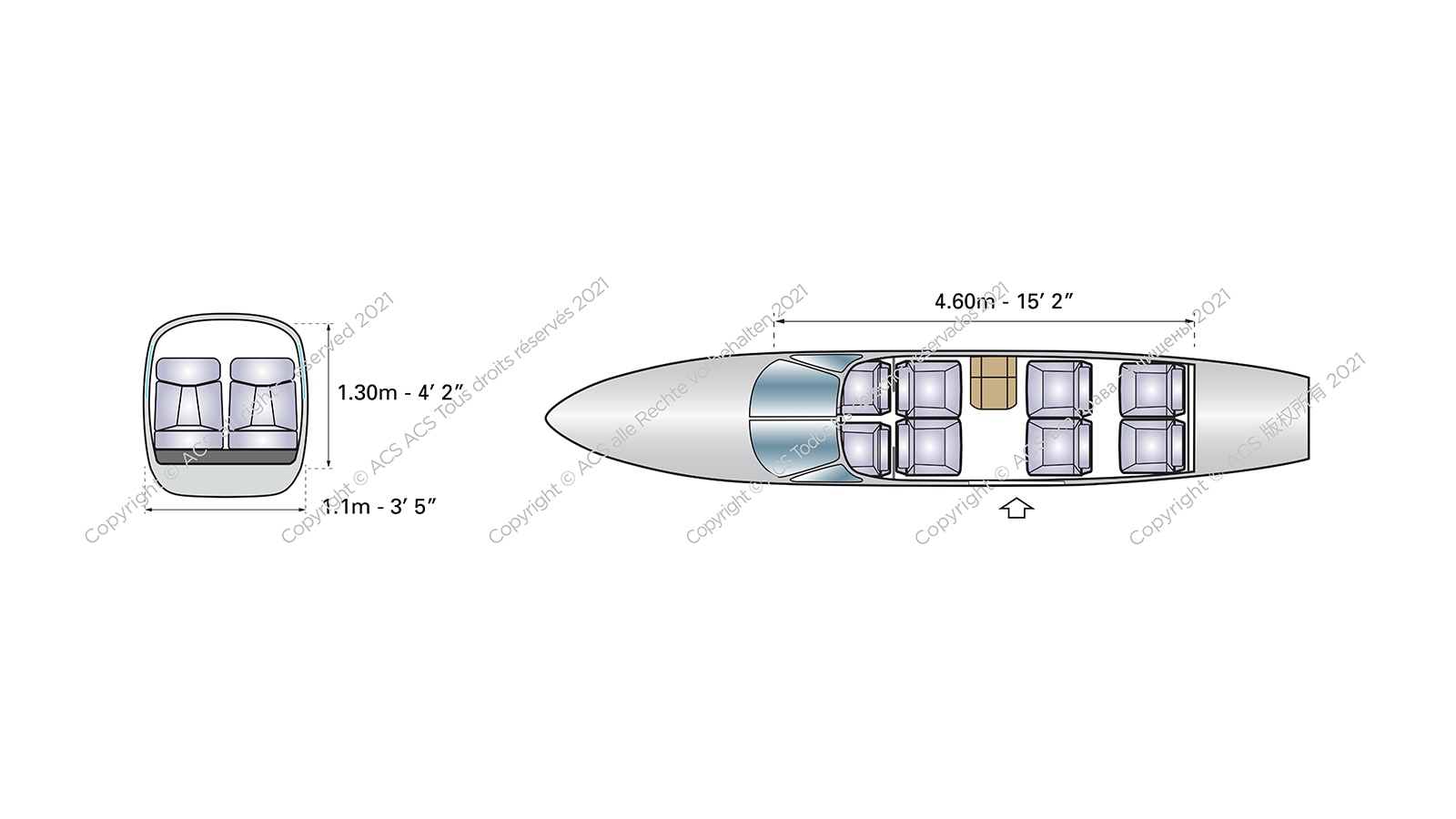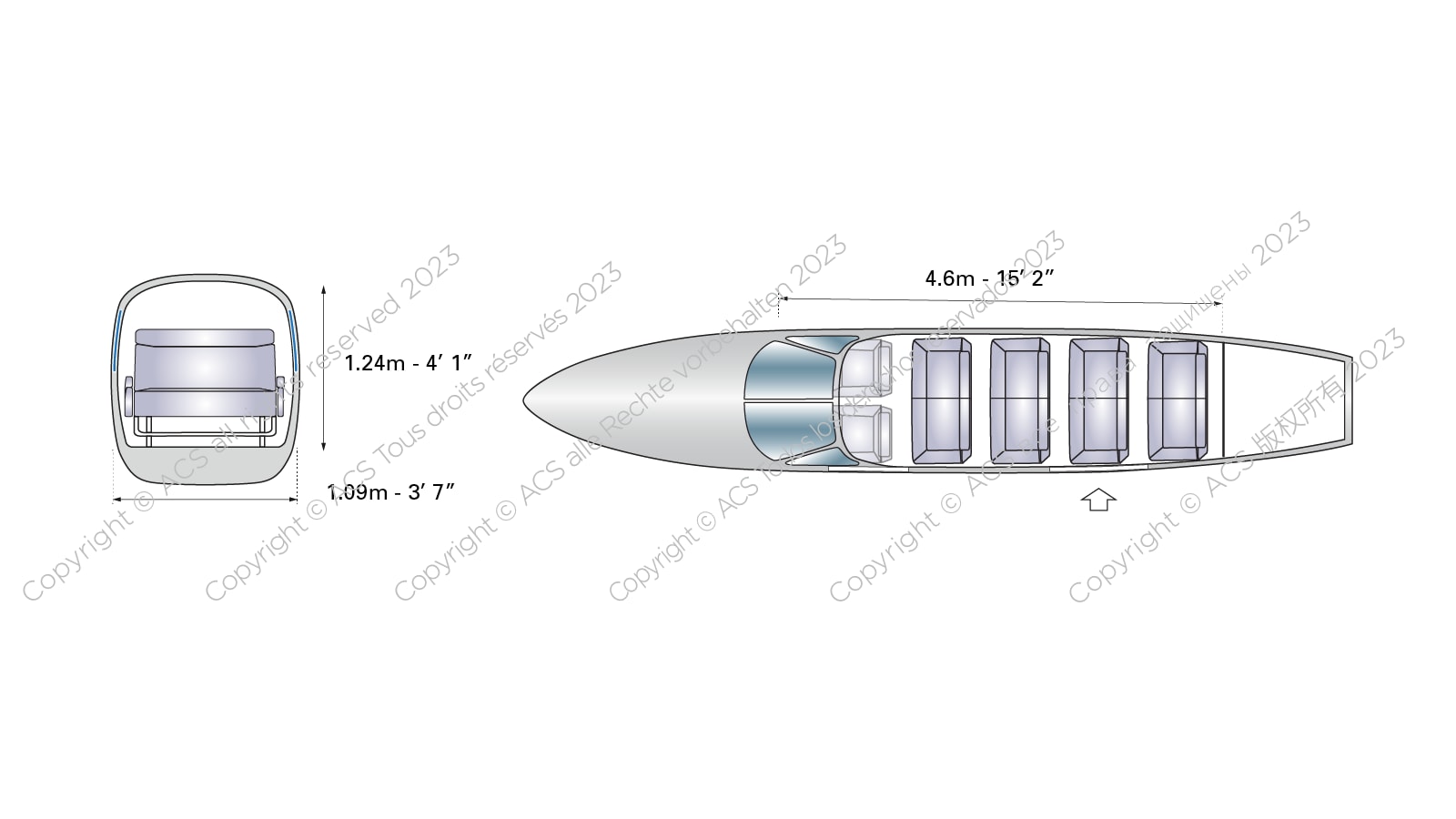BRITTEN-NORMAN BN ISLANDER
- Passengers 6-8
The Britten-Norman BN-2 Islander is a light utility aircraft with twin piston-powered engines. It’s a popular island-hopping aircraft, suitable for up to eight passengers with plenty of cargo and able to land at a range of airstrips.
About this aircraft
- The original Britten-Norman BN-2 Islander first flew in 1965 and received UK and US certification in 1967.
- The cabin seats up to eight passengers in a commuter configuration and up to six in an executive layout. If the aircraft is owned, a further passenger can sit in the cockpit with a single pilot, however, this option isn’t available with a charter.
- Depending on the variation, the aircraft’s normal range makes it ideal for short hops like Manchester to Dublin.
- The external baggage space can hold around six suitcases.
- There have been numerous upgrades and variants over the years, including the BN2B-26, BN2B-20 and BN-2T.
- The BN2B-26 is used for the world’s shortest flight between the Westray and Papa Westray islands in northern Scotland.
The Britten-Norman BN-2 Islander was designed in the 1960s and remains a popular transport solution despite its age.
Interior design
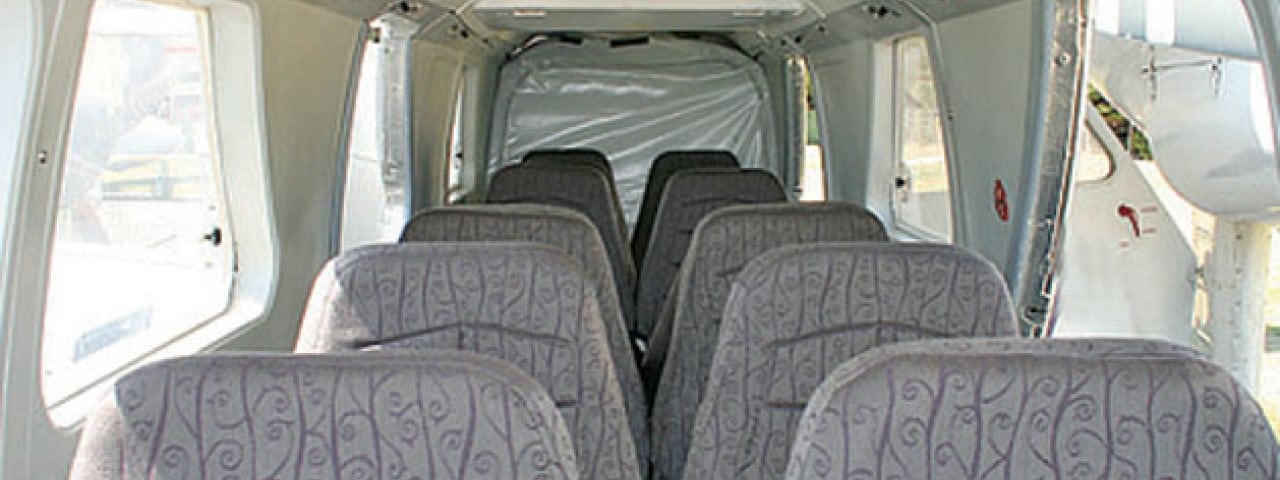
The BN-2 Islander’s cabin is 2.9m long, 1.24m wide and 1.09m high. The aircraft seats eight passengers in a commuter configuration, while a six-seat executive configuration usually features four club seats separated by two foldaway tables and two forward-facing seats in the rear. Amenities include a flat cabin floor, leather seats, an onboard oxygen generation system, a large baggage compartment, ventilators and entertainment systems.
Below are two typical configurations found on a Britten-Norman BN-2 Islander.

Interesting facts to learn before you fly
- The Islander is certified to fly from a range of landing strips, including unprepared airstrips, short runways and grass airfields.
- While the BN-2 Islander isn’t necessarily a high-performing aircraft, its all-round performance and ability to carry up to eight passengers with their luggage has made it a popular transport solution since the 1960s.
- The aircraft can carry 700 kg of cargo when operated as a freight aircraft.
Technological features
Pre-production, the Britten-Norman BN-2 Islander was fitted with twin Rolls-Royce Continental IO-360-B piston engines. These were quickly replaced with more powerful Lycoming O-540-Es, located further outboard on the wings for superior single-engine climb performance. Subsequent models featured Lycoming O-540-K1-B5s or Allison 250-B17Cs. Today, either carbureted or injected Lycoming 540 six-cylinders are used, while a turboprop variant is powered by Rolls-Royce Model 250 B17s.
The cockpit has also changed a lot over the years, with the original analogue avionics now replaced by a Garmin G600 glass cockpit in the newest models. Due to how long the aircraft has been in production, you might find a variety of different avionics on any given model.
History
Following a string of modified agricultural and light aircraft, Britten-Norman developed the single-seater BN-1 Finbee after seeing a gap in the market for an inexpensive twin-engine piston. Only one Finbee was ever produced, but it laid the groundwork for the BN-2 Islander, which targeted the commercial sector and focused on payload rather than speed or range.
The first production Islander flew in April 1967, receiving UK and US type certification later that year. Several upgrades followed, including the BN-2A Islander, which launched in 1969 with improved performance and a larger rear baggage area with external access. Lycoming O-540-K1-B5 engines became available in 1970 to boost hot-and-high performance, along with optional tip tanks and an elongated nose for baggage storage.
In 1977, a single standard BN-2 was refitted with Dowty Rotol ducted fans up to 20 decibels less noisy than conventional propellers. The BN-2B Islander II came the following year with an even quieter cabin and redesigned cockpit. Models could be fitted with twin turboprop Allison 250-B17C engines from 1980 under the BN-2T Turbine Islander designation.
The popular BN-2 Islander has stood the test of time and is still available today.
Manufacturer
British aircraft manufacturer Britten-Norman was founded in the mid-1950s by friends John Britten and Nigel Desmond Norman. The engineering graduates started out developing agricultural equipment and modifying light aircraft, before moving into aircraft production with the BN-1 Finibee and BN-2 Islander.
Following unsuccessful attempts to market new aircraft, Britten-Norman focused on improving the Islander. The BN-2 Trislander launched in 1970 with greater range and capacity, winning the Queen's Award to Industry for technological innovation in 1975.
Today, over 1,300 Britten-Norman aircraft have been built and the company is the UK’s only independent commercial aircraft producer.
Cost
Depending on factors like age and condition, the average price of a used Britten-Norman BN-2 Islander is around $650,000 (USD).
Charter rates
Charter rates for the Britten-Norman BN-2 Islander vary depending on the length of your journey and the airports you’re flying in and out of.
If you’d like to charter a Britten-Norman BN-2 Islander, contact our team for a quote today. For information on other charter options, browse our list of available private aircraft.
Wet lease rates
ACMI (Aircraft, Crew, Maintenance, Insurance) wet lease rates for the Britten-Norman BN-2 Islander vary depending on the age of the aircraft, lease term length, number of guaranteed block hours and average cycle ratio. Contact us for a personalised quote.
